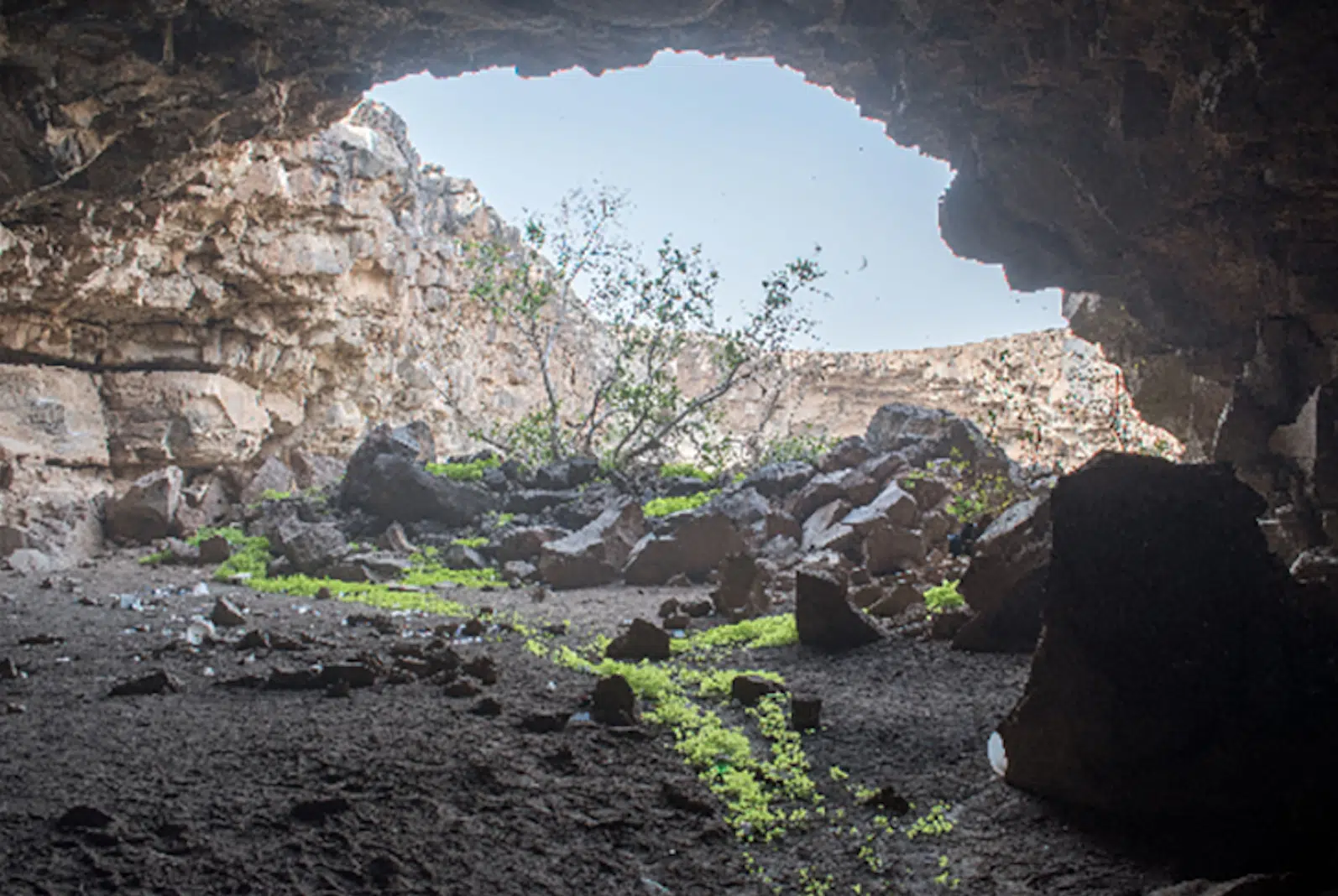
Aerial views show thousands of stone structures scattered across the Arabian peninsula. On the ground, ancient tools and fire pits lay near old lakes, with artwork showing hunting scenes on mountain walls.
Archaeologists only recently started exploring these sites, despite their visibility. Some structures date back 10,000 years.
The harsh climate – scorching days, freezing nights, and strong winds – damages many relics. So far, few fossils or layered deposits revealing history have been found, according to The Conversation.
Until recently, no archaeologists had explored the many caves and lava tubes in northern Arabia. In 2019, the researchers started investigating these underground spots. In a new study published in PLoS ONE, researchers reveal the first known human presence in a lava tube in the Arabian Peninsula.
Umm Jirsan tube formed due to cooling of lava
Located about 125 kilometers north of Madinah, the Umm Jirsan lava tube sits within the Harrat Khaybar lava field. Formed by cooling lava, this tube stretches an impressive 1.5 kilometers, with heights reaching 12 meters and widths extending to 45 meters in certain areas.
Upon entering the tube’s dark, winding tunnels, one is immediately struck by the abundance of animal remains. The floor is littered with stacks of bones, containing possibly thousands, if not hundreds of thousands, of well-preserved fossils, as reported by The Conversation.
The very first article on #archaeology in a #cave in #SaudiArabia published by @PLOSONE
Well done @StewieStewart13 and team!Thanks to @MOCSaudi @MOCHeritage @CEOHeritageksa @AbdullahAAbadi @ARCHE_Griffith
Link: https://t.co/YI002DGpfz pic.twitter.com/NGMaexkOF5
— Michael Petraglia (@MDPetraglia) April 17, 2024
These bone piles are the result of striped hyenas dragging bones underground for various purposes: to consume, store for times of scarcity, or feed to their offspring. Over thousands of years, this process has led to extraordinary accumulations of fossils, unmatched anywhere else in the world.
However, it’s not just bones filling the space. During our survey of the entrances to Umm Jirsan – areas where the roof has collapsed, providing access to the lava tube – researchers discovered hundreds of stone tools crafted from obsidian, chert, and basalt.
Stone artifacts found 75 centimeters below the surface
The researchers conducted excavations at the entrance of the eastern passage, close to a series of semi-circular stone structures whose age and purpose remain unknown.
The dig revealed additional stone tools, all crafted from fine-grained green obsidian, along with animal bones and charcoal.
Moreover, the majority of these stone artifacts were found in a distinct sediment layer approximately 75 centimeters below the surface.
Through radiocarbon dating of the charcoal and optically stimulated luminescence dating of the sediments, researchers determined that this primary occupation phase likely occurred between 7,000 and 10,000 years ago.
In addition to these recent discoveries within the lava tube, experts found intriguing objects scattered across the surrounding landscape. Among these were additional stone tools, circular structures, and a peculiar “I-type” structure.
These constructions are thought to date back approximately 7,000 years, as they are linked to large rectangular structures called mustatils, which experts think were utilized for ritual animal sacrifices.
See all the latest news from Greece and the world at Greekreporter.com. Contact our newsroom to report an update or send your story, photos and videos. Follow GR on Google News and subscribe here to our daily email!



